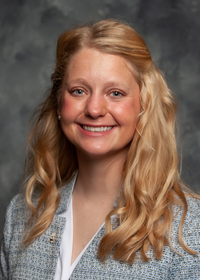Selecting a Feedlot for Beef Cattle Finishing
For stocker operators or cow-calf producers who retain ownership of cattle through the finishing phase of production, feedlot (feedyard) selection is a critical decision. Whether feeding cattle for the first time or having had many years of retained ownership experience, choosing the proper feedlot is an important step in improving operational profitability. Gathering information in advance on potential cattle feeders is worthwhile.
Feedlot Facilities
The major cattle feeding region of the United States extends from South Texas through the upper Midwest. The location of a feedlot impacts the cost of cattle transportation to the feeder. It also affects environmental conditions cattle will be exposed to at a feedlot. In addition, feedlot proximity to packing plants impacts marketing options at the conclusion of feeding.
The time of year that cattle are shipped combined with the feedlot location can influence the decision on where to feed cattle. For instance, locations known for harsh winter conditions may not be ideal for cattle shipped for winter feeding, especially if they are not well-adapted to handle extreme winter conditions. For example, Brahman-influence cattle may be better placed in feedlots in the southern area of the feeding region or when winter weather can be avoided during the finishing period. Effective windbreaks and pen drainage are facility features worth investigating.
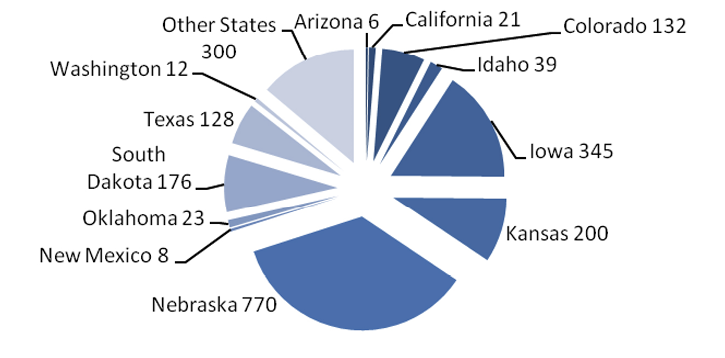
Pen sizes and number of pens available determine the flexibility of the feedlot to accommodate variation in size and type of cattle within loads. Many times it is advantageous to sort cattle based on gender, size, and type. This should be worked out between the cattle owner and cattle feeder before shipping. Whether or not cattle from multiple owners will be penned together may be important in feedlot selection. Some feedlots offer isolated pens for cattle confirmed negative for persistent infection with Bovine Viral Diarrhea Virus. When considering finishing heifers, ask potential feeders about their standard operating protocols for feeding heifer or mixed gender pens.
Many feedlots offer virtual tours. However, it may be more constructive to visit the feedlot to get a firsthand look at the feeding operation. Look for potential problems, such as stale feed in the bunks, excessive mud, or poor drainage. Be sure to note employees’ routines. Observe the pen riders to see if they are taking the time to look at every calf in the pen. As part of an evaluation of the nutritional program, see if the cattle appear generally content.
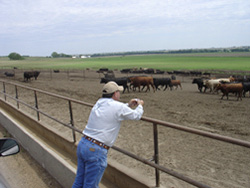
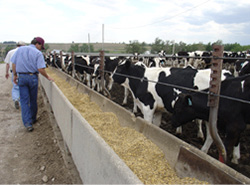
Inspect cattle handling facilities, and watch cattle handling practices. During a feedlot tour, be sure to evaluate the overall maintenance and appearance of the facilities. This may indicate the level of management at the feedlot. Well-kept, clean facilities often reveal pride in the operation and attention to detail.
Nutritional Program
Commercial feedlots are specialists in feeding cattle high concentrate diets to finish them to harvest weights and endpoints. These operations make money by selling feed and services to producers. Services are commonly charged as yardage, yardage plus feed markup, or feed markup alone. Understanding the feedlot’s nutritional program and process for determining cattle endpoint is important before placing cattle on feed. Getting the best value from cattle feeding often requires estimating anticipated expenses and cattle performance and calculating key economic and performance measures. This allows comparisons of feedlot programs and associated costs.
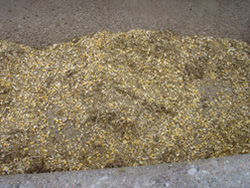
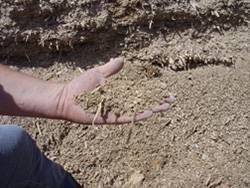
Before feedlot selection, become familiar with the nutritional program. It is critical for a feedlot manager to have experience in cattle feeding management. Many feedlots hire nutritionists to formulate diets and advise on feeding management. Proper bunk management and adequate bunk space are crucial to a good feeding program. Adequate water sources are also an item not to overlook.
Discuss cost of gain with feedlot management. This will indicate the yard’s track record on feeding performance and help compare costs with industry alternatives. Feedlot diets vary, based on local availability and cost of feed ingredients. Ask how often feed is purchased, how feed is processed, how often cattle are fed each day, and how many days on feed can be expected. Cost of gain is a good indication of how well feedlot production and financial management compares to competitors.
Some feedlots also offer backgrounding services for producers who want to send cattle not yet ready for the finishing phase. Many feedlots that do not provide custom backgrounding have a working relationship with custom backgrounders or stocker operators. These operations can add weight to cattle on a cost-of-gain basis and prepare young or lightweight cattle for optimal feedlot performance. This might be a more attractive alternative when feedlot costs of gain are expensive.
Health Program
The following questions can be asked about feedlot health programs:
- Does the feedlot have a veterinarian on staff or readily available?
- What is the receiving health program and hospital pen protocol?
- What processing, chute charge, medicine, hospital pen, or other health fees can be expected?
- What specific preshipping health program does the feedlot recommend?
Hospital pens should include both treatment and recovery areas with adequate shelter. Find out what records are kept on sick cattle. Morbidity (sickness) and mortality (death) rates are health benchmarks to consider in selecting a feedlot. Ask about the track record of the prospective feedlot for key health benchmarks. Make sure cattle health problems or death losses will be communicated to cattle owners in a timely manner.
Financial Services
Many feedlots provide cash advances or partner on cattle ownership. This eases cash flow and spreads risk. Feedlots often offer financing (with interest charges) for cattle, feed, trucking, and other costs. Comparing interest rates for this service is important. Feedlots may also assist with transportation arrangements for shipping cattle to their facilities. Equity requirements may be part of financing arrangements, so be sure to check with the feedlot about any such requirements before shipping cattle.
Insurance coverage is another financial aspect that should be clarified before feedlot selection. Specifically, determine how financial losses associated with cattle death will be handled under various circumstances. Losses from natural disasters may be treated differently from losses due to illness, digestive disturbance, or injury.
Assistance with risk management strategies (locking in corn prices or purchasing cattle futures contracts) is another service many feedlots provide. Customers may also look to feedlot managers to answer questions on breakeven estimations to better plan cattle feeding and marketing strategies.
Marketing Opportunities
Marketing is one of the most important services a feedlot provides to customers. Determine up front who makes cattle marketing decisions. Find out how many times cattle are typically sorted for marketing or how many separate cattle harvests per load or pen can be expected. Ask the manager how many packers bid on the cattle each week. Determine whether cattle are sold “live” or “in the beef,” and find out whether or not the feedlot has access to grids, contracts, formula pricing, or marketing alliances.
Some value-based marketing programs require the use of specific cattle feeders and/or packers to participate in those programs. Participation in USDA Process Verified Programs (PVP) or Quality System Assessment (QSA) Programs may vary from one feedlot to another. In addition, buyer access differs among feedlots and impacts bid prices and access to various grid marketing options.
Feedlot Management and Reputation
Many producers develop personal relationships with feedlot managers. Customer service is an important aspect of the cattle feeding business. Good feedlot managers are professional and help make the cattle owner feel comfortable with and informed about the feeding and marketing programs. If one feedlot does not offer the level of customer service desired, another competitor may provide it.
Regular communication about cattle performance can be obtained from many feeders. Feedlots should also provide regular, timely, and useful written or electronic reports of performance, health, and costs incurred for a given feeding period. More and more feeders now coordinate data collection and transfer to the ranch of origin. In most cases, these services can be used at a nominal charge per head for individual animal feedlot performance and carcass data reporting.
Learning about a feedlot’s reputation is essential in selecting a cattle feeder. Visit with producers who have fed at a particular feedlot to learn about personal experiences. Checking references on a feedlot may help avoid surprises later. Once feedlot selection has been narrowed down to a few operations, contact the managers directly to visit with them about their feeding programs. Time and effort spent investigating individual feedlot operations is a wise investment for Mississippi cattle producers. For more information on feedlot selection, contact your local MSU Extension office.
Reference
United States Department of Agriculture. (2008). Data and statistics – Quick Stats. National Agricultural Statistics Service.
The information given here is for educational purposes only. References to commercial products, trade names, or suppliers are made with the understanding that no endorsement is implied and that no discrimination against other products or suppliers is intended.
Publication 2505 (POD-10-24)
Reviewed by Brandi Karisch, PhD, Associate Extension/Research Professor, Animal and Dairy Sciences. Written by Jane Parish, PhD, Head, North Mississippi Research and Extension Center.
The Mississippi State University Extension Service is working to ensure all web content is accessible to all users. If you need assistance accessing any of our content, please email the webteam or call 662-325-2262.




